The prototype Formula 1 spray covers tested for the first time at Silverstone last week made “no tangible difference” to the level of spray produced by the cars, meaning the FIA is now working on a new evolution of the concept incorporating the real-world data acquired.
The straightline running at Silverstone on a section of track that was artificially soaked involved Mercedes driver Mick Schumacher running with the prototype wheel covers on the front and rear wheels, and McLaren’s Oscar Piastri running in standard trim as a control and to help evaluate visibility.
Imagery from that test has been kept under wraps, but the FIA has made available CAD drawings that show what it describes as “a representation” of what was tested.
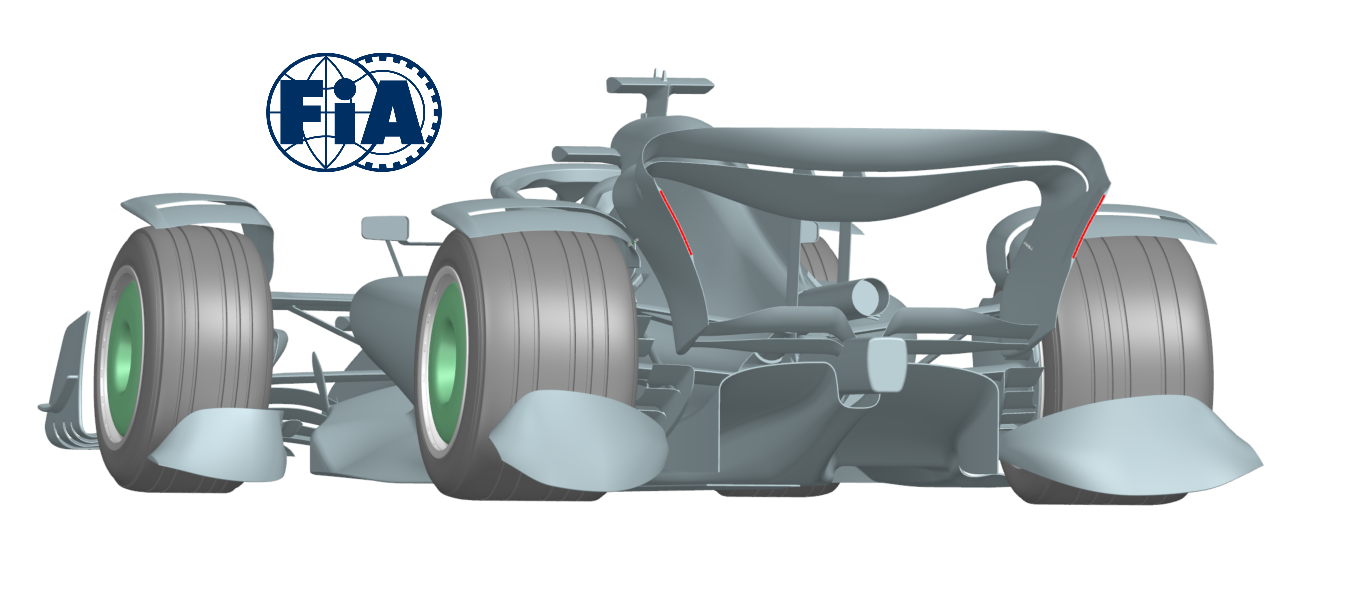
F1 hopes to introduce what were originally referred to as ‘wheel arches’ but are currently dubbed spray guards, and also referred to as the ‘wet weather package’ (WWP), as a bolt-on standard-specification part that can be used for extreme wet conditions. The objective is that these will take five-to-ten minutes to fit either before a session/race or during a red flag, then remain on the car even if conditions dry.
The hope is this can prevent a repeat of the farcical 2021 Belgian Grand Prix, in which heavy rain meant a result was declared based on positions after a single lap under the safety car following a red flag on the third lap of running.
The Silverstone test was designed to gather real-world data to correlate with the extensive CFD work undertaken by the FIA as the next step in the research and development process. This used a first version of the spray covers, which were produced by Mercedes, with some engineering contribution from the team, on behalf of the FIA after a request to teams for assistance.
The spray covers were two-part designs that did not fully enclose the wheel, mounted on the suspension uprights. But as the FIA’s single-seater director Nikolas Tombazis explained, they did not reduce the spray sufficiently to be a viable design. This means work is ongoing on a more aggressive version of spray guards that it’s hoped can be tested in the autumn.
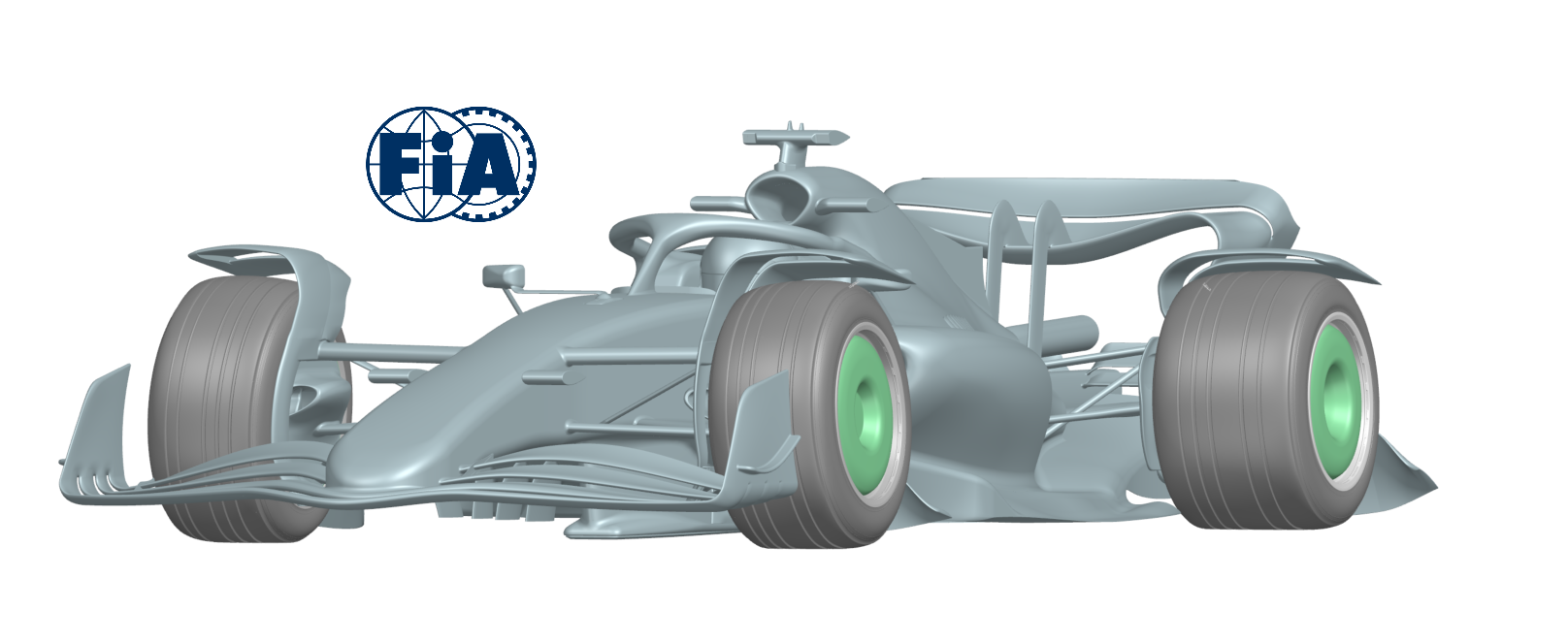
There were hopes the spray covers could be ready for later this season when the project started last year, but given a viable design is still some way off the earliest they could appear in races is now 2024. But the spray guard project doesn’t have a set timeline, so it’s a question of being introduced as soon as they are ready.
“Obviously, it would have been perfect if everything had been confirmed perfectly and we already had a solution to apply in October or something like that, but that wasn’t the case,” said Tombazis when asked by The Race to explain the findings from the test.
“Having started this project towards the end of last year and done quite a lot of CFD simulations, we understood quite soon that it was not quite as simple as ‘OK just put a cover and off you go and you’re done’.
“First of all, the CFD simulations are quite tricky because we have to simulate also the water particles and when there’s water droplets inside the flow field, it’s actually quite complicated physics.
“And additionally, even then you need correlation because you don’t have the full knowledge in how much of the water is sucked from the earth from the ground and how much is thrown away from the tyres. So it gets quite complicated, quite quickly and that’s why we were in need of some correlation.
“The actual devices that were used were relatively small and they were covering only small parts of the wheels. I wasn’t personally too confident they were going to work, I was thinking ‘is that covering enough? Is it going to have enough of an effect?’ And as it turns out, it didn’t make a tangible difference.
“But we did gain a lot of correlation and a lot of data that we now can more confidently correlate. So it was a useful first test.
“The set-up at the track, how to measure it is not very easy [but it] worked quite well so we had a reasonable way of assessing the matter. We’re not, however, there with the configuration and we just need to try again.
“Not many engineering projects work on the first go perfectly, so we just need to work a bit more.”
What happens next
Although the initial design didn’t produce the hoped-for results, Tombazis doesn’t believe the test invalidates the objectives.
But it’s clear it’s going to require what’s referred to as a “much more extensive” solution than the two-part spray guards that were trialled to achieve the objectives of reducing the spray by around 50% to make the visibility good enough to race in.
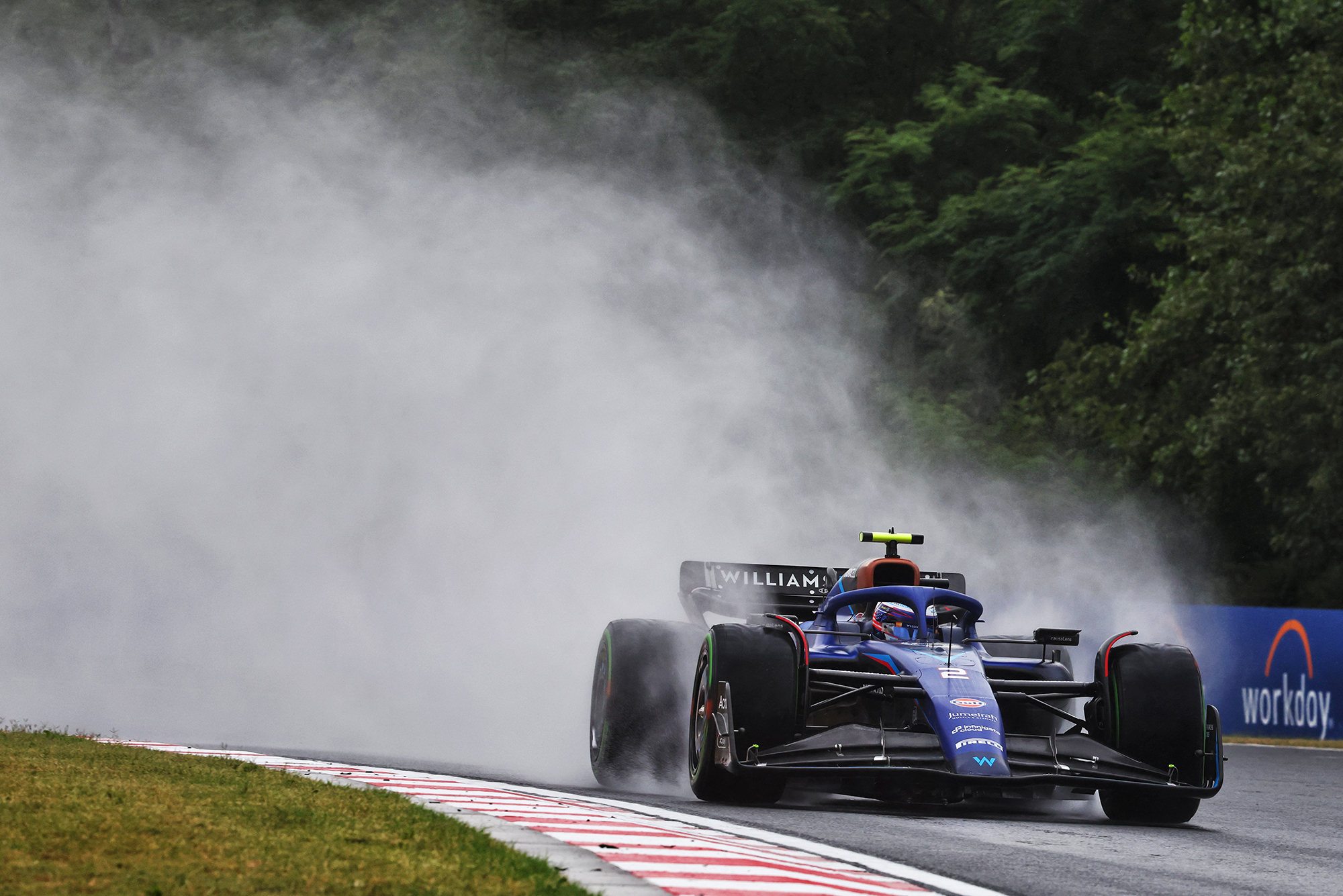
However, as Tombazis points out, the wheels only produce some of the spray and work is ongoing to understand how much is flung out from the diffuser as it’s still unclear what the split is.
“There’s still quite a lot of exposed wheel,” said Tombazis. “We clearly haven’t confirmed the concept but I don’t think this is enough to say this doesn’t work. We need to work a bit more.
“The key criticality is how much water is pulled up from the track by the diffuser and how much water is thrown up by the wheels.
“We expect this is going to be about a reduction of approximately half, we don’t think it’s going to eliminate everything.”
If a workable design is finalised, it will either be put into the regulations as a prescribed design everyone must make themselves or put out to tender. But the kits would have to be identical in order to ensure the aerodynamic disruption is roughly equivalent from car to car. However, one of the concerns among teams is that the spray guards will inevitably interfere with the unique aero map of each car differently.
Tombazis said that the understanding of the aerodynamic is “relatively easy to quantify, but what we didn’t have well enough is the core design”.
Has ground effect made it worse?
It’s unclear what the next version of the spray guards will look like. However, they are set to further enclose the wheels given the diffuser itself cannot be covered.
While it seems possible that F1’s shift to ground-effect regulations last year has made this problem worse, Tombazis suggested the problem would be similar even with pre-2021 cars. He even suggested the next test could even conducted using 2021-specification cars if necessary should the current cars not be available owing to the last eight races of the season being held outside Europe.
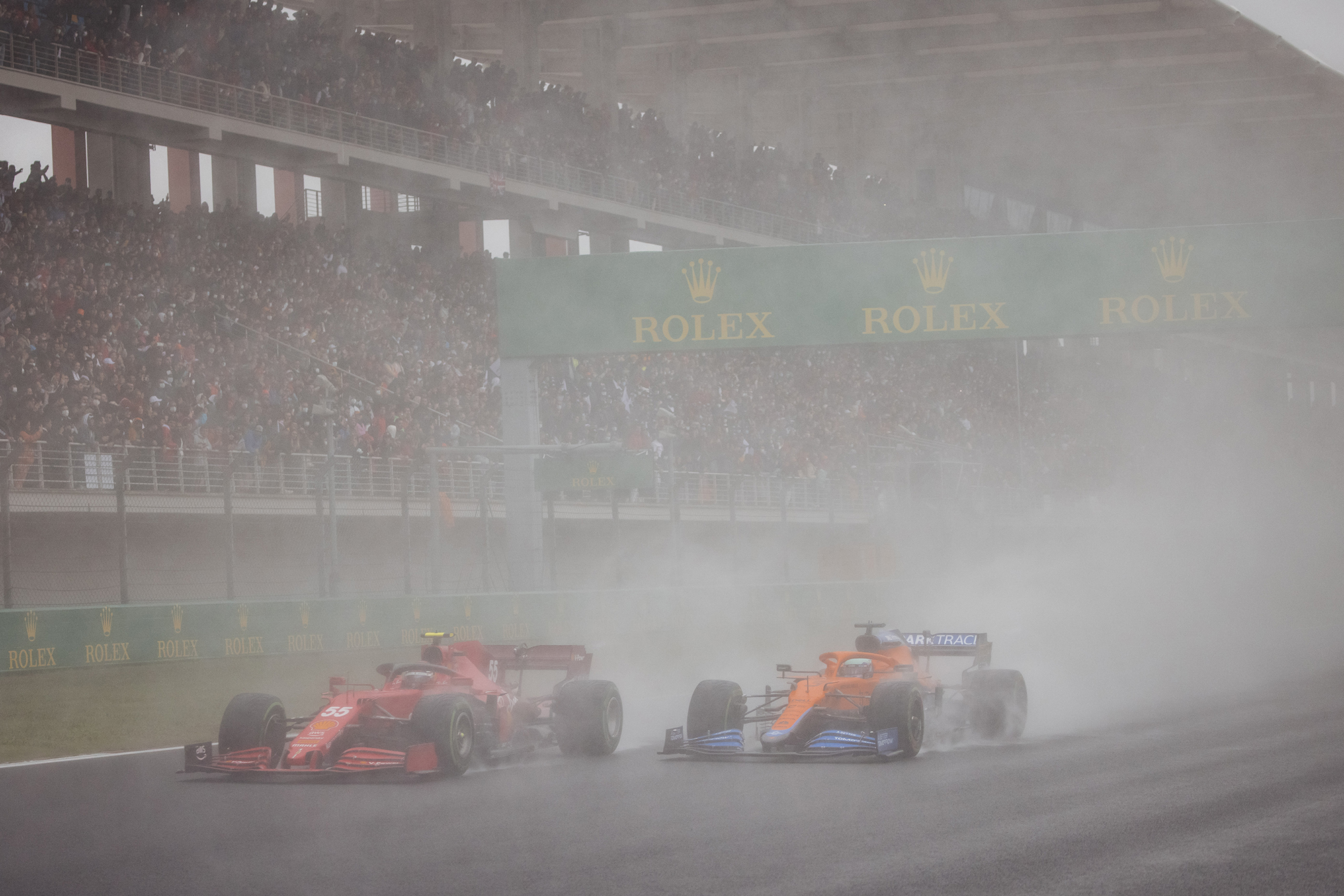
“That [a solution to the spray from the diffuser] would be a lot more problematic because essentially it’s an inherent issue to do with diffusers,” said Tombazis.
“But by and large sportscars have less of this issue so I’m optimistic that indicates that we have a fighting chance. But until we actually properly quantify it, we need to continue the R&D programme.”
Mission nearly impossible – but worth it
It would be unfair to characterise this first test as a failure given it was always just part of the R&D process rather than a candidate package for immediate introduction into the regulations. It’s laudable that the FIA has taken on such a major challenge and is extensively researching the design rather than introducing something blind, which might have been the case several decades ago. But it is clear that the work done since the project was launched has underlined how difficult the objective is to achieve.
That’s not a surprise given the challenges not only of containing the spray, but the knock-on effects of potentially containing more water on the track surface and also the aerodynamic and weight considerations of what is going to evolve into a bigger package that could go as far as fully enclosing the wheels.
Last year, Tombazis said this was all about the “scars” of Spa 2021 and he believes it’s worth the FIA continuing to push for a viable spray guard package even if just to ensure one such race avoids being ruined in the future – and with the obvious knock-on consequence of general safety gains from visibility being better in the wet.
And if a workable design for bolt-on spray guards can be found, there’s also the tantalising possibility that it could then be introduced in other single-seater categories, including Formula 2 and Formula 3, down the line.
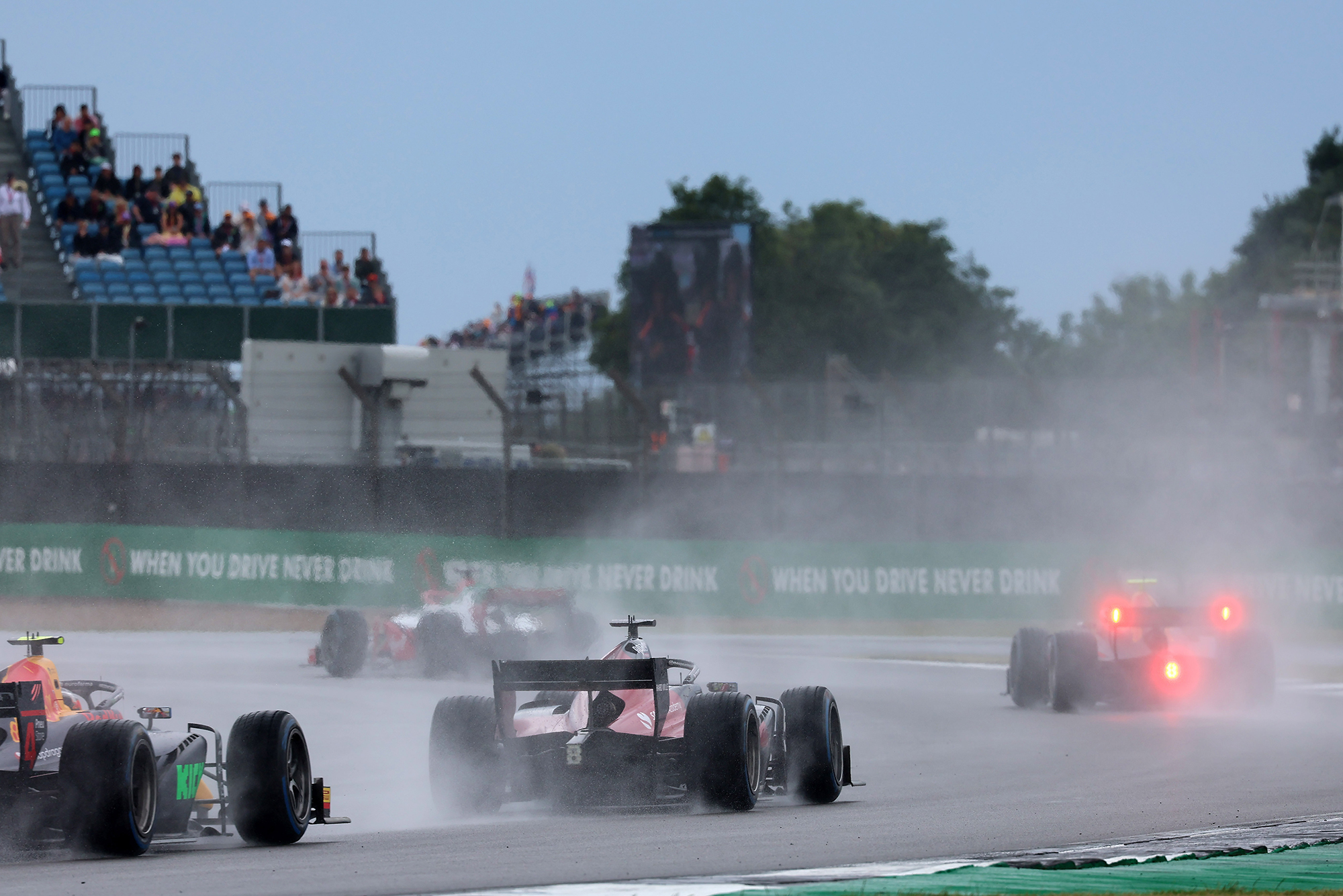
“We are completely committed to getting this to work because we feel that sooner or later, it will make the difference between a race being cancelled and a race happening,” said Tombazis.
“If over its lifetime it saves a race and the hundreds of thousands of people suffering from a situation like at Spa in 2021 once, I think it’s well worth it.”
Mercedes trackside engineering director Andrew Shovlin backed the work on this and is hopeful that the data gathered in the Silverstone test will allow the FIA to improve the design to one that could achieve the objectives.
“First of all, let me remark on how important it is that the FIA has taken the initiative to look at how we can improve the situation with the visibility associated with the spray,” said Shovlin when asked about the test.
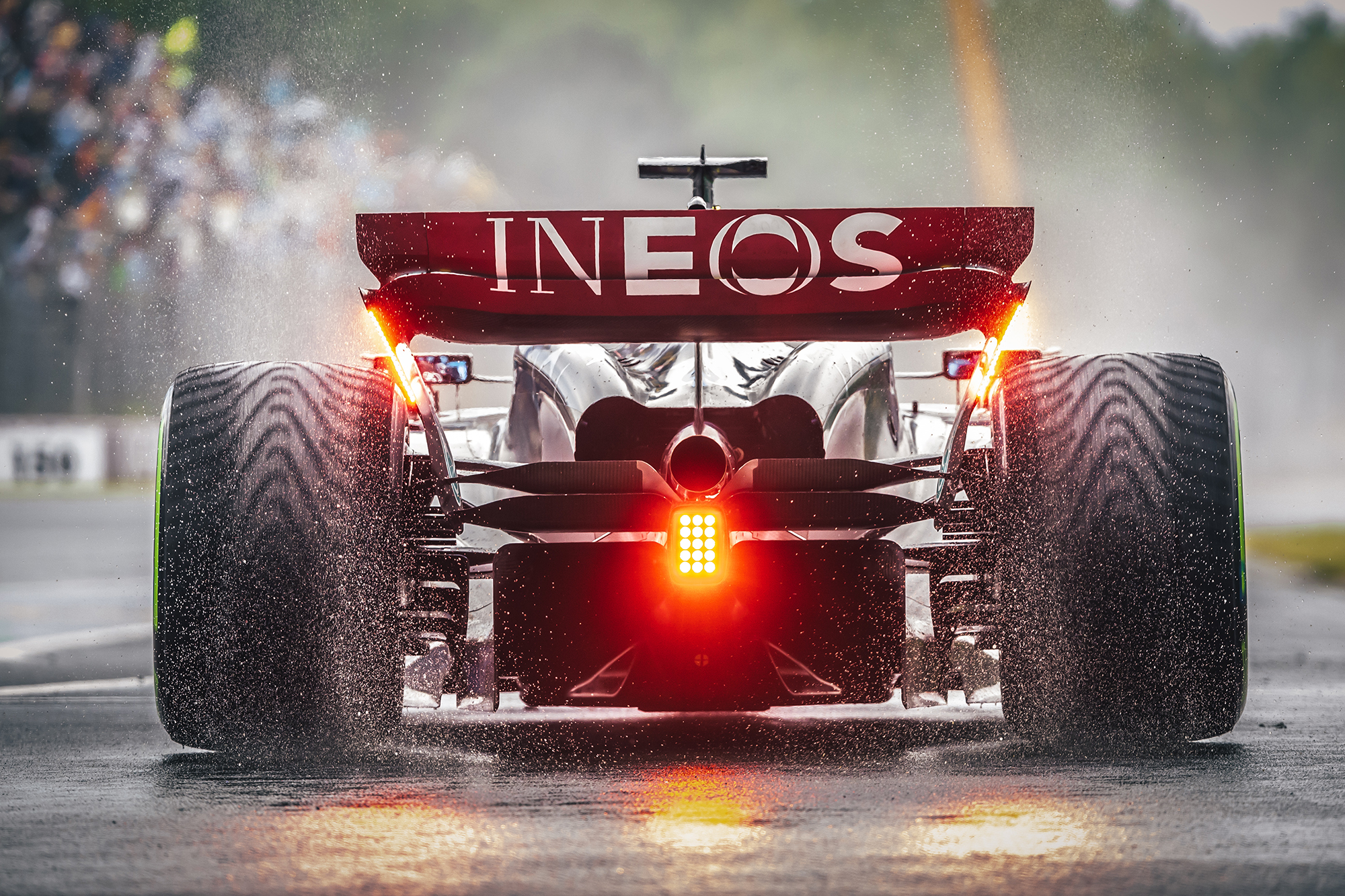
“That’s a high priority topic in the agenda for motorsport. Therefore, we welcome this initiative and we’re happy to support the FIA.
“It looks like we could acquire quite a lot of data that was important to validate the models, because you do a lot of the design based on the development models, especially computer simulation and these days [of actual track testing], I think, are invaluable in terms of being able, in the future, to use these tools to fine-tune the design of these devices.
“And I’m sure through the practicality of the tests, you could learn also, like, can these devices stay all the time on? What is the implication for pitstops, and so on. So, a very important step in trying to improve the situation with the spray.”





